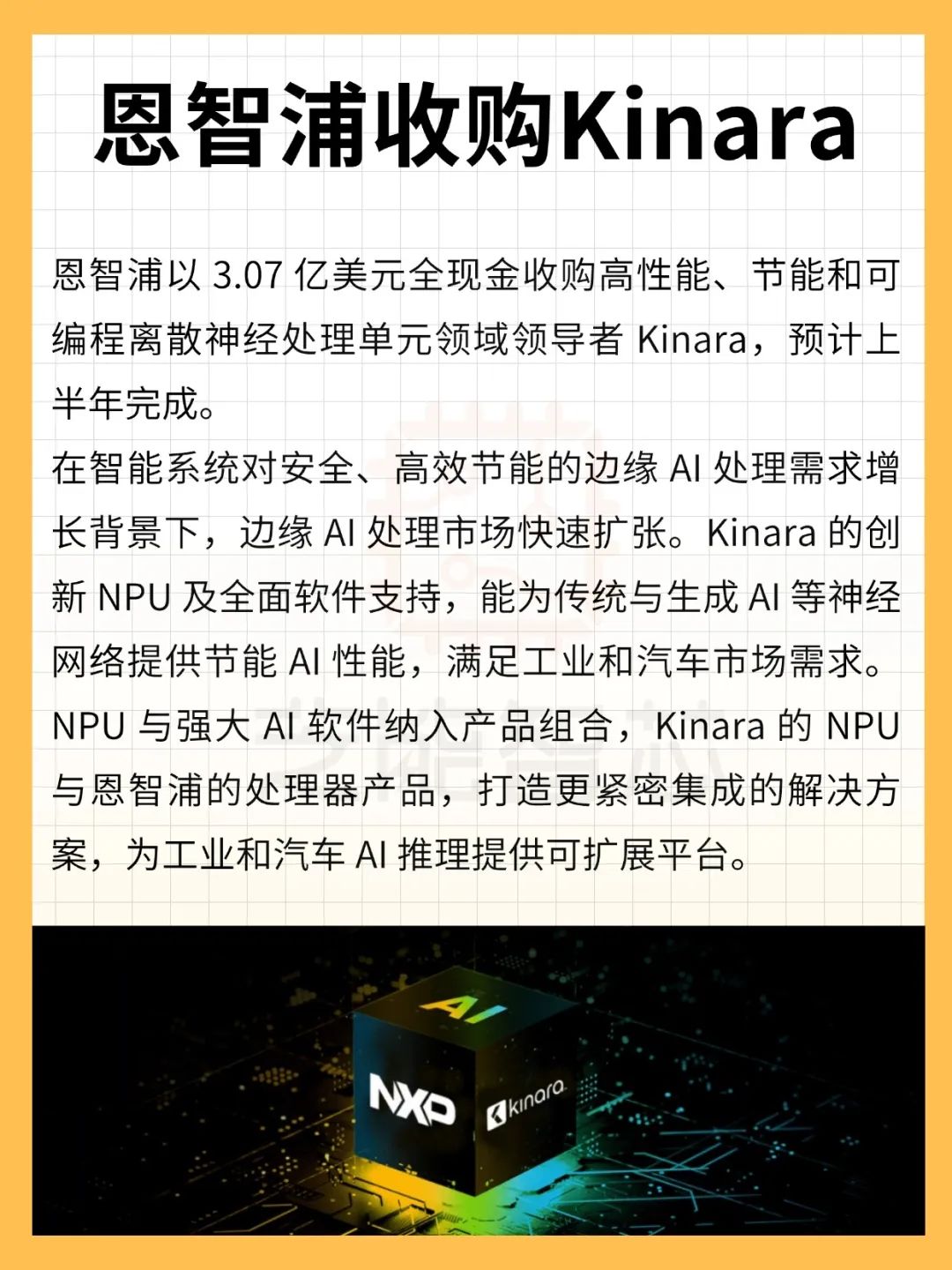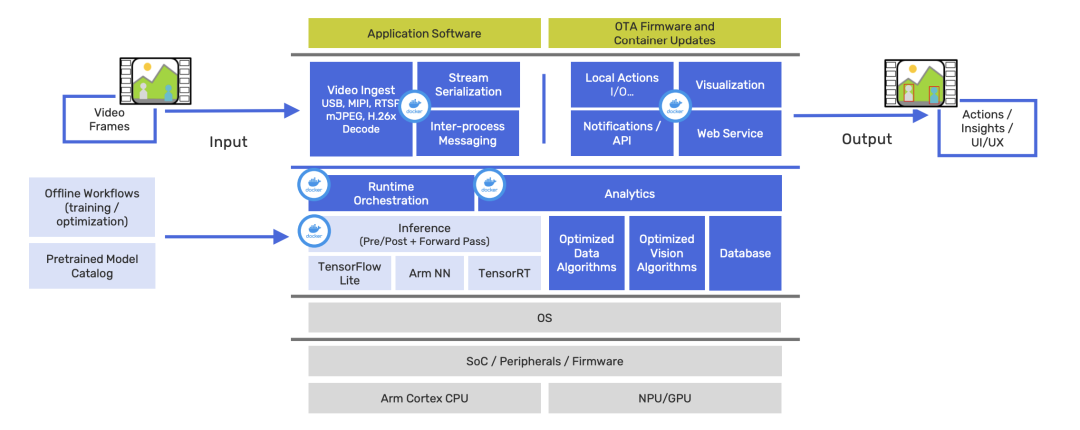NXP Acquires Kinara for $307 Million, Bolstering Edge AI Capabilities
![]() 02/12 2025
02/12 2025
![]() 598
598
Produced by Zhineng Zhixin
NXP Semiconductors (NXP) has announced the acquisition of US-based edge AI solution provider Kinara for $307 million, marking a pivotal strategic move in the AI sector, particularly in the realm of high-performance, low-power neural processing units (NPUs).
Kinara's core technology, notably its ARA series NPU, will be seamlessly integrated into NXP's existing processor and software platforms, further solidifying its competitive stance in industries such as industrials, automotive, and IoT.
Let's delve into the strategic implications of this acquisition, Kinara's technological prowess, and NXP's growth prospects in the AI and edge computing markets.

Part 1: Acquisition Background and Strategic Layout
As a global semiconductor leader, NXP Semiconductors has consistently strengthened its position in intelligent edge computing and AI through a series of mergers, acquisitions, and technological advancements. The acquisition of Kinara for $307 million underscores another strategic stride in the AI domain.
With the proliferation of AI, particularly the widespread adoption of generative AI, edge computing, and IoT, the demand for efficient, low-power edge AI solutions is surging.
While traditional cloud computing models offer computational prowess, they grapple with limitations such as high latency, data privacy concerns, and reliance on network connectivity.
Conversely, edge AI excels by shifting processing capabilities closer to the data source, enabling real-time responses, reduced latency, and enhanced data security and privacy.

Kinara, a specialist in high-performance, energy-efficient NPU solutions, boasts significant advantages in the edge AI arena.
The ARA-1 and ARA-2 NPU chips, renowned for their exceptional energy efficiency and processing capabilities, are the go-to solutions for numerous industrial and automotive AI applications.
The ARA-2 chip, in particular, showcases remarkable performance in generative AI and deep learning inference. It facilitates the execution of large language models on-device, markedly improving processing efficiency and reducing cloud dependency.
NXP's acquisition of Kinara aims to harness its robust NPU technology to accelerate innovation and product integration in edge AI.
This acquisition not only augments NXP's existing edge computing platform but also paves the way for new application scenarios, notably in industrials, automotive, and smart homes, fostering more efficient and intelligent solutions.
Part 2: Kinara's Technological Advantages and Market Prospects
Kinara's ARA series NPU stands as the cornerstone of its technology, distinguished by its innovative architecture and high energy efficiency, positioning it favorably in edge AI applications.
The ARA-1 and ARA-2 products are the pinnacle solutions for traditional AI and generative AI inference, respectively.
The ARA-2 stands out with an eightfold performance enhancement over its predecessor, achieving up to 40 TOPS (trillions of operations per second), sufficient to support complex AI tasks like image recognition, speech recognition, and natural language processing.
ARA-2's programmability allows it to adapt to rapidly evolving AI algorithms, ranging from CNN to generative AI and future agent-based AI, ensuring its long-term competitiveness in technological advancements.
The ARA series NPU excels not only in traditional AI inference tasks but also effectively supports the local deployment of generative AI applications.
It can process large language models directly on-device, eliminating the need for cloud dependency. This feature holds immense potential for applications like smart assistants, smart home devices, and industrial robots.
In smart homes, devices equipped with the ARA-2 chip can more accurately interpret user voice commands and offer personalized services tailored to user needs. In the industrial sector, the ARA-2 chip can be utilized in machine vision systems, industrial robots, and automated production lines, boosting production efficiency and accuracy.
Despite its robust performance, the ARA-2 chip faces challenges related to power consumption, cost, and data security. Balancing processing power and energy efficiency is crucial for future technological advancement, given that high-performance computing often comes with high power consumption. Additionally, the chip's cost poses a barrier to its widespread adoption.
Beyond hardware advantages, Kinara offers robust software development tools to aid customers in optimizing AI models and simplifying deployment processes.
Kinara's AI software development kit encompasses a comprehensive model library and optimization tools that seamlessly integrate with NXP's eIQ AI/ML software development environment, empowering customers to swiftly build end-to-end AI systems. This holistic hardware and software solution allows developers to effortlessly implement complex AI applications without compromising performance.
Summary
NXP's acquisition of Kinara not only bolsters its technological prowess in edge AI but also establishes a strong foundation for future market competition.
With the burgeoning demand for edge AI, particularly in industrials, automotive, and IoT, NXP's integration of Kinara's NPU technology will provide comprehensive support for the development of AI applications, fueling industry innovation.





